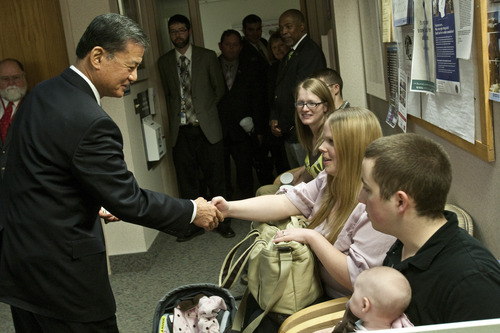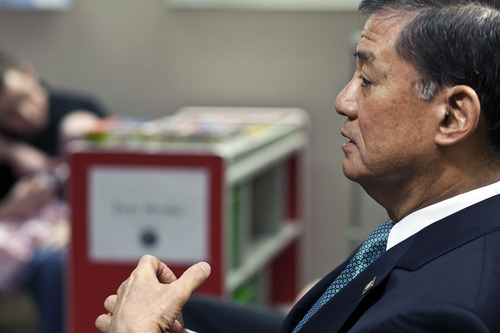This is an archived article that was published on sltrib.com in 2012, and information in the article may be outdated. It is provided only for personal research purposes and may not be reprinted.
Women are the fastest growing subset of veterans, and for the next month, those interested in the future of their health care and benefits can comment on a Department of Veterans Affairs' draft plan for better care.
"Expanding care and services to women veterans is too important to limit ourselves solely to the views within the department, so we are seeking feedback from all stakeholders, most importantly women veterans themselves," Secretary of Veterans Affairs Eric K. Shinseki said in a statement.
Responding to criticism of VA's care for women, Shinseki last year formed a task force to develop an action plan to address women veterans' issues. Chaired by the VA chief of staff, it has three VA under secretaries as a governing board.
The group surveyed department experts to identify the main issues and organize them by priority.
Comments can be left here. There is also a public discussion board on the Internet.
Public comment is being taken until June 22.
Among the report's findings:
• Women face gender disparities in care from the VA. They receive fewer screenings, have poorer control of health conditions that lead to cardiovascular disease, and are more likely to be prescribed inappropriate drugs than men.
• A higher proportion of female veterans are diagnosed with mental health problems than male veterans. They have a higher incidence of military sexual trauma. One in five women veterans who use VA for health care screen positive for such trauma.
• Studies show that 31 percent of women veterans have both medical and mental health conditions, compared with 24 percent of male Veterans. The most common diagnoses among women veterans seeking care are PTSD, hypertension, depression, high cholesterol, low back pain, gynecological problems, and diabetes.
The report's proposed improvements emphasize four areas:
• Ensure the VA has sufficient staff to provide primary care, mental health care and specialty care to women veterans, and improve coordination of care inside the VA and with community providers.
• Improve the environments where women veterans receive care, arranging building space to protect their dignity and security and making sure the needed equipment is available.
This includes a culture change to reverse the routine assumption that women patients are a male veteran's wife, mother, or daughter, rather than veterans themselves.
• Help women veterans with unique challenges in finding employment and make sure they are taking advantage of programs available to them.
• Continually collect data about how the VA is treating and assisting women veterans, and evaluate improvements in services and benefits.
The number of women veterans using VA services has increased 83 percent in the past decade, from about 160,000 to over 292,000 between fiscal years 2000 and 2009. That compares to a 50 percent increase in men, according to the VA.
In 2011, about 1.8 million or 8 percent of the 22.2 million veterans were women. By 2020, they are expected to comprise nearly 11 percent.





